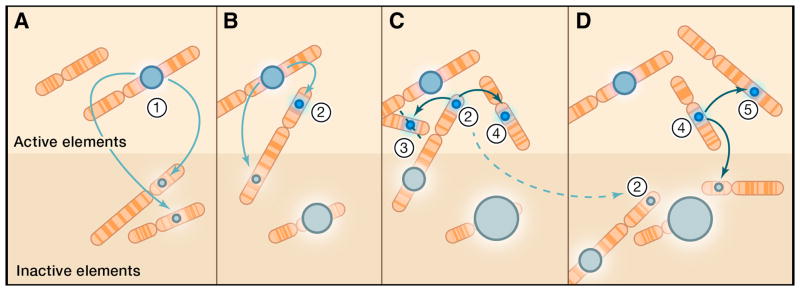Figure 4.
A schematic of retrotransposon dynamics. (A.) An L1 insertion (1) of moderate activity (blue) and allelic frequency (circle size) is shown (1). It templates new insertions, many of which are 5′ truncated or mutated at the time of insertion (gray denotes inactivity). The new insertions segregate mostly as neutral alleles; some accumulate to a higher allele frequency over time (larger gray circles in subsequent panels). (B.) A new insertion is generated that is highly competent or ‘hot’ for retrotransposition (2, blue) because of features intrinsic to its sequence or by its location in an expression-permissive target site. (C.) This ‘hot’ L1 templates others; there may be a tendency to template other full-length, ‘hot’ progeny insertions. ‘Hot’ elements are continually lost through negative selection (3, interrupted diagonal), or (D.) mutation (2, interrupted arrow from C). However, some remain to potentiate other retrotransposition events (4). It is envisioned that these ‘hot’ elements are relatively transient in genomes due to purifying selection against them, do not achieve high allele frequency, but are responsible for the bulk of transposition in modern humans.

